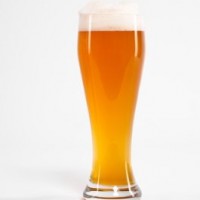Make your Service a Glass Act

How Glass Shape Changes Customer Experience
Breweries spend vast sums of money on designing the perfect glass to showcase their particular styles of beer and the reasons why are not just for marketing purposes. The shape and style of the glass can have a dramatic impact on the taste, aroma and mouth feel of beverage, as well as its head retention and the longevity of the carbonation.
Below are a few examples of the different styles of glasses available and the types of beer they were designed to be used with.
Mug, Seidel or Stein
The mug is the traditional British replacement to the pewter tankard (Seidel is the German form and a Stein is usually a stoneware mug with a lid), brought into popular service at the end of the Victorian era when beer quality and clarity increased.
These are handled, heavy duty, sturdy glasses with thick walls and bases. Fun to clink together safe in the knowledge they aren’t likely to shatter unless someone really gets too enthusiastic.
The only benefit of these glasses is the volume of beer they can hold, they are easy to drink out of and can take a bit of punishment.


Pint Glass (Becker, Nonic and Tumbler)
These glasses came to prominence in the 60’s because brewers were informed that pub drinkers preferred a lighter straighter glass along with the design invention of a rim this didn’t chip (Old style straight glasses had a tendency to nick or chip around the lip area due to weaknesses in this area). The Nonic (from No Nick) glass was born.
The benefit to the manufacturer is that these were quicker, cheaper and easier to make, easier to store than the mug style of glasses due to the reduced space needed with there being no handle taking up room on the shelf and still easy to drink out of. For serving they are best for beers with large crowning heads.
Pilsner (Also called Pokal)
Favoured in European countries these are smaller and more delicate that nonic and mug style glasses they also hold less liquid.
The benefit is that its shape helps to present the colour, clarity and effervescence of the pilsner and light style lager whilst maintaining the head.


Weizen Glass
This glass originated in Bavaria Germany for drinking wheat beers (Weizenbier). Sometimes mistaken for Pilsner glasses these have a similar tapered appearance but bulge out again towards the top of the glass to give more space for the head. Once again designed to show off the colour of the beer while allowing you to experience the fluffy head associated with wheat beers.
Stange
Another glass traditionally from Germany these are tall cylindrical shaped glasses used for delicate beer styles such as Altbier, Bock or Lambic.
The design of this glassware helps to concentrate up the flavours of the malt and hops.


Chalice (or Goblet)
The first of the stemmed type of beer glass we will talk about, these can range from the plain looking thick stemmed Chalice through to the ornately decorated and long delicate stemmed Goblet. Designed to showcase and retain a large amount of head (2-3 centimetres) they will generally contain a nucleation point in the bottom of the glass to ensure its appearance. The wide open topped mouth of the glass helps one to take a deep drinks from the glass through the foam head. These are generally used for Belgian style Beers
Tulip
The name obviously comes from the shape of the glass which resembles the stylised shape of the flower. The taper at the side helps to capture and concentrated up the flavours and aromas, enhancing them while the widening of the mouth of the glass helps to create and support a large head of foam. Generally this style of glass is used for Lambic, Saison and Belgian ales Some Scottish ales may also be served in a slightly modified version of this glass that resembles the Scottish Thistle symbol.


Snifter
Stolen from the distilling industry where it is used to capture and enhance the aroma of brandy style drinks the Snifter is used for strong ales for the same reason as the tulip glasses.
Oversized Wine Glass
Again used mainly for Belgian style beers the large open mouth allows for the creation of a thick head while the open bowl is used to enhance the aroma of the beer.


Champagne Flute
Or actually the beer flute, these long tapered glasses tend to have a shorter stem than traditional champagne glasses and are used to display the carbonation (bubbles), excellent clarity and light crisp colour. The long narrow shape helps to maintain the carbonation as it gives less space for the beer to gas off and gives a quickly released aroma.
If you need further information about the correct glassware and how to maintain it Just Ask CellarCraft

Download the entire CellarCraft guide
